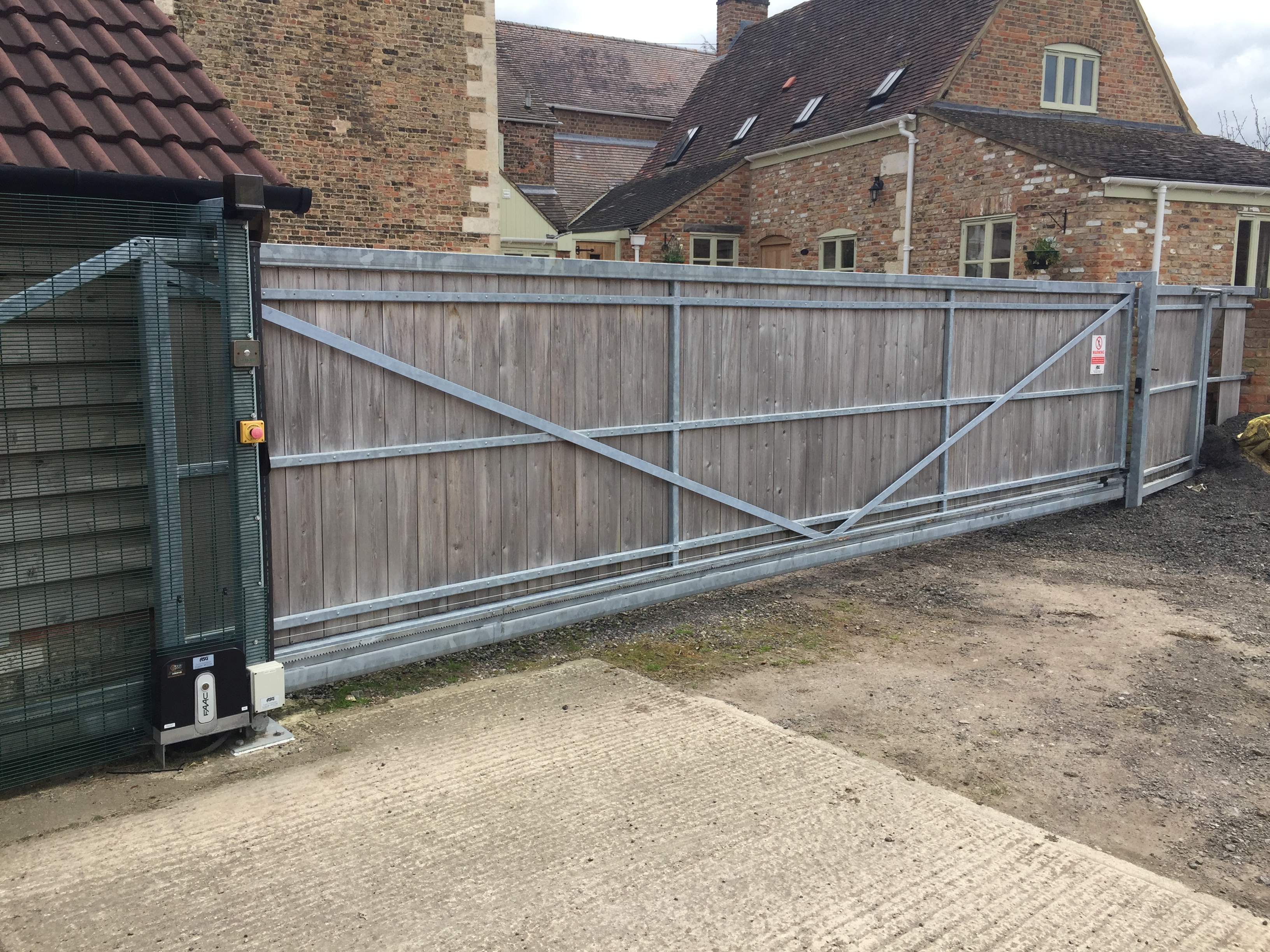Information
-
Client / Site
-
Site address
-
Document No.
-
Prepared by
-
Location
-
Conducted on
Scope of Work
-
Outline of works to be undertaken
-
Photograph 1 of area
-
Photograph 2 of area
General Method
-
Work locations
Designated work areas will be cordoned off to prevent access by unauthorised persons. Site operatives shall ensure as little disruption as possible is caused to other site users and members of the public. Where required, barriers will be used to create safe walkways for pedestrians to ensure they are not at risk of collision with moving traffic or work activity.
Any excavations will be cordoned off and covered when unattended. -
Access Equipment
Avoid work at height where possible.
Where access is required, operatives will utilise industrial BS EN 131 ladders following pre-use inspection in accordance with training. Operatives will maintain 3 points of contact at all time and implement fall arrest system. MEWPS or scaffold must always be considered as first option if work at height is required. If ladders are to be used, they should only be used for short duration. -
Personal Protective Equipment (PPE)
High Vis. - at all times
Safety Boots. - at all times
Gloves. - required
Goggles. - required
Ear defenders - required
Dust Mask. - required -
Waste Management
All waste disposed of in accordance with SCCI Alphatrack Environmental Policy -
Accident and Incident reporting
All accidents, incidents and near misses to be reported as per SCCI Alphatrack procedures. All will be investigated to identify measures to prevent reoccurrence. -
Street works
All staff to have knowledge of chapter 8 NRSWA. When work will take place into public highway operatives must have Unit 2 competency and supervisor must be competent to Unit 10 in accordance with NRSWA. -
Traffic and Pedestrian Management
Signs should be in place to warn approaching motorists aware of ongoing works. Adequate cones and barrier tape to be in place as minimum to provide safe work zone for operatives. Operatives to remain vigilant to approaching traffic.
Pedestrians should not be redirected into traffic routes. Physical barriers to prevent entry to work areas and traffic routes. Controls should remain in place until work has been completed. -
Hot works
All hot works to be conducted under the terms of a permit to work. This will be issued by an authorised person who will ensure the control measures and conditions of the permit are suitable. A competent operative will sign the copy and is responsible for carrying work out in accordance with the permit. -
Excavations
It is foreseen that excavations will be shallow in nature rarely more than a metre in depth. Large open excavations will be guarded to prevent falls. Open excavations will not be left unattended and will be covered when operatives are not on site. -
Underground services
Prior to any excavation works or works that could disturb buried services the area must be scanned. Where possible, site plans should be consulted. -
Vibration
Plant, machinery and equipment to be used in the undertaking of the contract will be assessed to determine vibration levels generated. Operations will be monitored to ensure hand-arm vibration and whole body vibration thresholds as recommended in the Directive 2002/44/ec. Where assessment indicates that exposure is likely to exceed thresholds the period of use will be restricted to ensure adverse effects do not arise. The age and condition and maintenance of the equipment will add to the magnitude of vibration produced. Environmental conditions such as cold, will increase the likelihood of adverse effects arising from use.
Typical vibration levels listed below:
Road breakers - 12m/s2
Angle grinder. - 6m/s2
Hammer drills - 9m/s2
Demolition hammers - 15m/s2
General vibration levels -
Site welfare
Use of site welfare facilities to be agreed with site management prior to commencement of works. SCCI operatives will respect amenities and do so in accordance with with any instruction given. -
First Aid
All engineers hold Emergency First Aid at Work and carry a maintained first aid box within each vehicle.
Basic procedure should you come across injured person is to;
- Assess situation and remove hazard if possible
- Contact 999 and provide details on location and injury -
Noise
Activities such as cutting may generate noise over 85dB and hearing protection will be worn and work planned to minimise exposure time. -
Dust
All reasonable steps will be taken to minimise dust generation during activities. -
Isolation of Power Sources
Live power supplies must not be worked on and must be isolated. Works carried out on electrical systems should only be carried out by competent electricians. Where required, lock out kits must be provided to prevent re-activation of circuits during works. -
Welding Activities
Operatives must only use welding equipment if competent and have received full training. Welding visors and gauntlets must be used at all times of welding activity. Welding screens must be erected to protect members of the public. Vehicles must be equipped with burns kit and eye wash kit if welding activities are to be carried out. Carbon dioxide extinguishers must be present and operatives trained in their use. These must not be used in confined spaces or excavations due to the possibility of asphyxiation.
Method Statement
Method Statement
-
Detailed site specific method statement
Risk Assessment (select hazard if present)
Asbestos
-
Asbestos Exposure
-
HARM - Asbestosis / mesothelioma / pleural plaque
RISK - High -
WHO - Operatives / Members of the public
-
CONTROLS - Before working in any area you must check the clients asbestos register to see if any present. If asbestos is discovered, work must be stopped immediately and reported to project manager. Work will only commence when a survey of the area has been carried out by a competent person and is either declared safe or an alternative method is found.
RESIDUAL RISK - Low -
Further controls required
-
Further controls
Dust
-
Dust Exposure
-
HARM - Ill health from exposure
RISK - High -
WHO - Operatives / Members of the public
-
CONTROLS - Face masks to be worn at all times whilst carrying out activities that create dust or when entering dusty environments. Work area should be cordoned off with cones, barriers and barrier tape and warning signs. Where possible water should be used for dust suppression.
RESIDUAL RISK - Low -
Further controls required
-
Further controls
Manual Handling
-
Manual Handling
-
HARM - Serious back injuries / sprains / strains / torn ligaments
RISK - High -
WHO - Operatives / Members of the public
-
CONTROLS - Operatives must assess the following: LOAD - what is being lifted? INDIVIDUAL - are you able to lift the load? TASK - does it need to be done manually or can it be done by other means? ENVIRONMENT - are the conditions suitable for manual handling? All operatives are trained in manual handling techniques. Where loads are heavier than 25kg an assessment must be conducted.
RESIDUAL RISK - Low -
Further controls required
-
Further controls
Exposure to work activity
-
Exposure of work activity
-
HARM - Serious injuries
RISK - High -
WHO - Members of the public
-
CONTROLS - Operatives must ensure members of the public are segregated from work areas through the use of barriers, cones and barrier tape. Warning signs must be used to alert the public to on going works.
RESIDUAL RISK - Low -
Further controls required
-
Further controls
Fire Prevention / Escape routes
-
Fire Prevention / Escape routes
-
HARM - Serious injury or death
RISK - High -
WHO - Members of the public / Operatives
-
CONTROLS - Operatives must ensure that before work starts the assembly points and escape routes are identified. Operatives should only use fire extinguishers if they have had the appropriate training. Operatives must follow on site emergency procedures at all times.
RESIDUAL RISK - Low -
Further controls required
-
Further controls
Work equipment
-
Work Equipment
-
HARM - Serious injury
RISK - High -
WHO - Members of the public / Operatives
-
CONTROLS - When using work equipment operatives must ensure that; work equipment is maintained in efficient working order and in line with manufacturers guidelines. Operatives must be trained and competent to perform the tasks with the equipment. Any defects must be reported immediately and corrected by a competent and authorised person. Work equipment must only be used in the manner it was intended and appropriate PPE must be worn.
RESIDUAL RISK - Low -
Further controls required
-
Further controls
Drilling / Cutting activities
-
Drilling / Cutting activities
-
HARM - Serious injury / Eye injuries due to projectiles
RISK - High -
WHO - Members of the public / Operatives
-
CONTROLS - Eye protection must be worn at all times whilst carrying out activities that create dust or projectiles. Eye protection must be of the correct specification which is appropriate to the task. If working in close proximity to the public then netting and fencing should be erected.
RESIDUAL RISK - Low -
Further controls required
-
Further controls
Cement exposure
-
Cement exposure
-
HARM - Skin burns / Dermatitis
RISK - High -
WHO - Operatives
-
CONTROLS - Minimise contact with wet and dry cement by using barrier cream, gloves and appropriate clothing. Ensure any areas that come into contact with cement are washed thoroughly. Be aware for the early signs of contact dermatitis. Refer to COSHH assessment sheet and product information.
RESIDUAL RISK - Low -
Further controls required
-
Further controls
Vibration
-
Vibration
-
HARM - Vibration white finger
RISK - High -
WHO - Operatives
-
CONTROLS - Vibration creating equipment must be used in accordance with the ELV calculator to avoid the risk of white finger and associated problems. Equipment should be well maintained to reduce vibration levels. New equipment should be used where possible.
RESIDUAL RISK - Low -
Further controls required
-
Further controls
Inadequate first aid provisions
-
Inadequate first aid provisions
-
HARM - Sustaining injuries
RISK - Medium -
WHO - Operatives
-
CONTROLS - Operatives must ensure they have a first aid box which is minimum of a 1 - 10 person kit. It must be adequately stocked and meet legal requirements.
RESIDUAL RISK - Low -
Further controls required
-
Further controls
Slips and trips
-
Slips and trips
-
HARM - Serious back injuries / sprains / strains / torn ligaments
RISK - Medium -
WHO - Operatives / Members of the public
-
CONTROLS - Operatives to ensure that all work areas are well maintained and clear of obstruction. Appropriate clothing and safety footwear to be worn to ensure stability and ankle support.
RESIDUAL RISK - Low -
Further controls required
-
Further controls
Welding Activities
-
Welding Activities
-
HARM - Eye damage (Weld eye) / Heat burns / Electrical shock burns
RISK - High -
WHO - Operatives / Members of the public
-
CONTROLS - Operatives must be fully trained in the use of welding equipment and generator. Welding visor must be worn when welding activities are undertaken, in conjunction with breathing protection and welding screens.
RESIDUAL RISK - Medium -
Further controls required
-
Further controls
Electricity / working on electrical circuits
-
Electricity / working on electrical circuits
-
HARM - Electrical shock / Electrical burns / Death
RISK - High -
WHO - Operatives / Members of the public
-
CONTROLS - Operatives must be competent to carry out work on electrical systems. Isolation procedures must be followed and supplies locked off as necessary. Circuits must be isolated before work commences on them.
RESIDUAL RISK - Medium -
Further controls required
-
Further controls
Further information
Further information
-
Reference
Control of Substances Hazardous to Health 2002
Provision and Use of Work Equipment Regulations 1998
Control of Asbestos Regulations 2012
Control of Noise at Work Regulations 2005
New Roads and Street Works Act 1991 -
Address of nearest A&E Hospital
-
Additional Information
-
Supervisor / Surveyor
-
SITE USE ONLY (Operatives to note any amendments or additional controls required)












